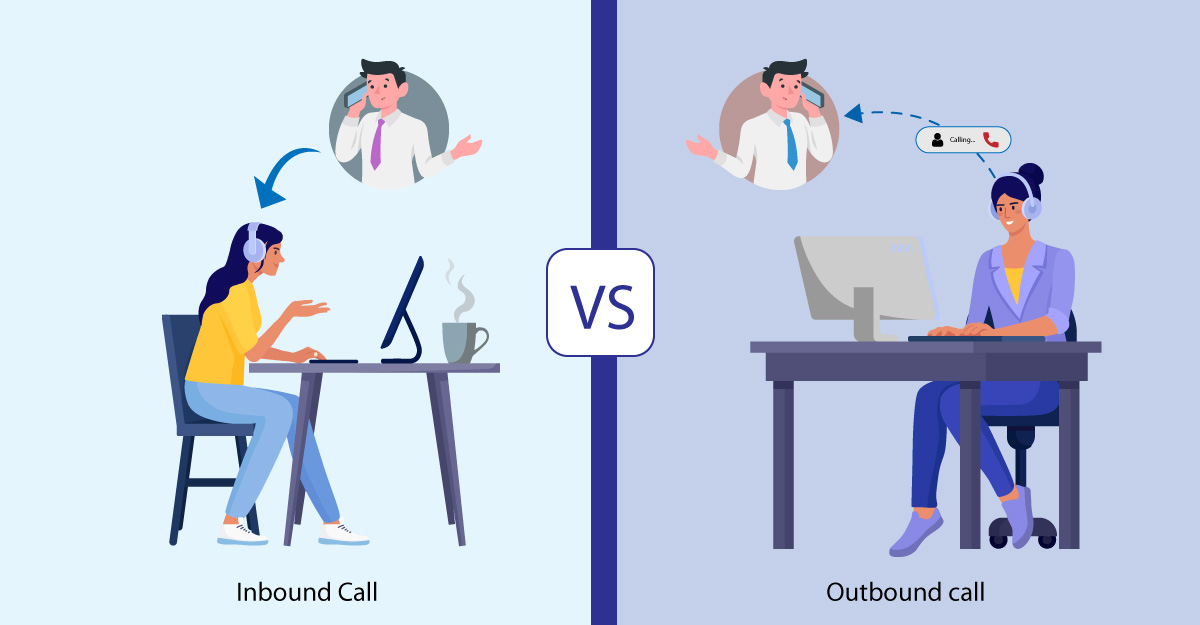
January 24, 2023

January 24, 2023
In the era of chatbots and emails, it is easy to think that customers rarely prefer calling a business. However, the opposite is true. Phone calls are still the most preferred tool used by customers trying to approach or connect with a business. A study by CFI Group has shown that more than 76% of all consumers prefer the traditional medium of phone calls to reach customer support representatives. With these numbers, it makes complete sense for call center businesses to invest in inbound and outbound call center solutions.
Now, let us learn about inbound and outbound call center solutions.
Table of Contents
An inbound call center solution is programmed to handle incoming calls from customers or clients, often for customer service or support. Inbound call centers typically have a high volume of calls and may use interactive voice response systems to route calls to the appropriate agent. Here are some interesting stats about inbound calling:
An outbound call center solution, on the other hand, is designed to handle outgoing calls, often for sales or marketing purposes. Outbound call centers may make a high volume of calls, and may use automated dialing systems to reach a large number of contacts quickly. Here are some interesting stats about outbound calling:
Both inbound and outbound call centers can be operated on-premises or in the cloud, and may use a variety of technologies to improve efficiency and customer experience, such as call recording, call routing, and customer relationship management (CRM) software.
Inbound call centers are focused on handling incoming calls from customers, while outbound call centers are focused on making outgoing calls to customers.
Inbound call centers typically have a high volume of incoming calls, while outbound call centers have a high volume of outgoing calls.
Inbound call centers handle calls for customer service or support, while outbound call centers handle calls for sales or marketing.
Agents in inbound call centers primarily listen and respond to customers, while agents in outbound call centers primarily initiate and lead conversations.
Inbound call centers use interactive voice response (IVR) systems to route calls to the appropriate agent, while outbound call centers use automated dialing systems to reach a large number of contacts quickly.
Agents in outbound call centers typically use scripts to guide their conversations, while agents in inbound call centers may not use scripts as often.
Inbound call centers tend to have longer call handling times than outbound call centers.
Outbound call centers often analyze call data to improve sales and marketing strategies, while inbound call centers primarily use data analysis to improve customer service and support.
Inbound call centers tend to have more robust quality assurance programs to ensure customer satisfaction, while outbound call centers focus on meeting sales and marketing goals.
Inbound call centers tend to have more relaxed and customer-centric environments, while outbound call centers tend to be more high-pressure and results-driven.
Inbound calls provide benefits such as improved customer service and support, as well as the ability to gather valuable information and feedback from customers. Outbound calls can be used for a variety of purposes, including sales, marketing, and customer follow-up. The benefits of outbound calls include the ability to generate leads and revenue, increase brand awareness, and improve customer relationships. Both inbound and outbound calls can also be used to gather data and insights on customer needs and preferences, which can help a business to improve its products and services.
Looking at the ongoing market scenario, it is wise enough to say that for businesses with the requirement for both inbound communication as well as outbound calling to reach out to clients, a hybrid call center software will be a perfect choice. If you need more information or any assistance in selecting the right cloud phone system for your business or cloud telephone system, then please reach out to us.
Top Heading
2138 Views 0 Comments